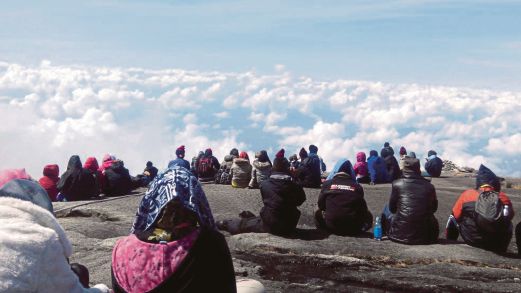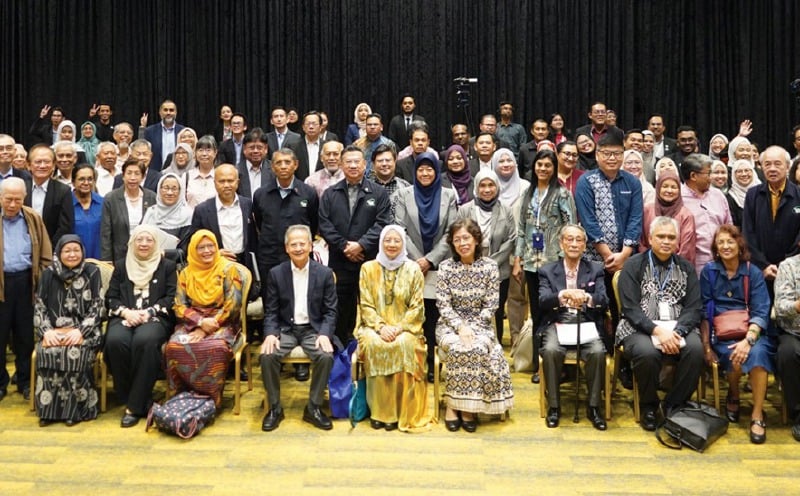WHEN the earthquake struck on June 5, the first thing on the minds of guides up Mount Kinabalu was to look after their climbers.
Testimonies from survivors tell us how the guides held on, pulled them away and blocked falling rocks from hitting them. Four of them died trying and they will be remembered.
The events that followed saw 59 mountain guides taking charge and treating the climbers as if they were their own family, their own children. Later the same day, they made the crucial decision to take all 105 stranded climbers down to safety.
It brought out the best of them as they coaxed traumatised climbers, attended to the wounded and led those who could manage it down the mountain trail, which turned treacherous after the 5.9-magnitude earthquake.
There were also those who responded from below, organising small teams wearing rubber soled shoes and an extra shirt to race up the trail, risking their own lives to save others.
More than 70 of them responded, and one wiry guide in particular, Rizwan Kauhinin, 25, who was photographed with 12-year-old El Wafeeq El Jauzy, cashier Jonathan Tom Nius, 21, and carrying Singaporean Hannah Santiago, 12, caught the media’s attention.
They have since became a symbol of bravery and courage of the mountain guides and those who work up the majestic peak. They are heroes.
After the earthquake which claimed 18 lives, much appeared to have changed as far as the view from below the mountain is concerned.
The most visible change is probably the Donkey’s Ears, twin peaks that protrude uniquely as the name suggests. But that was before.
A piece of the west peak, or rather, a boulder the size of a double-storey house, had fallen off into Low’s Gully, a kilometre-deep ravine.
Few have gone up after the earthquake, the tremors of which were felt in 12 districts, and caused extensive damage. Those who did reach the peak or saw it from above told of how different the mountain looks now.
One of them, Dr Jamili Nais, director of Sabah Parks and custodian of the mountain, had said the scenery and much of the trail developed over the years had changed.
Most of the peaks and the plateaus remained intact but the surroundings were altered as giant boulders and rubble rolled down the mountain “like a river of rocks”, according to survivors.
Even the montane forest above Panar Laban was cleared, said mountain guide Moidin Sompot, who was up at about 3,800m leading six foreign climbers when the earthquake struck at 7.15am. One of them, Ozaki Masahiro from Japan, was among those who perished.
There were 195 climbers, 59 guides, including 11 via feratta guides, 45 employees of the Sutea Sanctuary Lodges that operates lodging for guests, and six park rangers on the mountain when it shook. Soon the rocks began tumbling.
Stronger climbers would have scaled the summit, Low’s Peak at 4,095m, and returned to Laban Rata at the 3,300m mark or signed out at the Sayat Sayat Hut at 3,800m.
Climbers at via ferrata, a trail where they walk on the rock face with a safety harness attached to a cable, had also started up minutes before the earthquake.
The biggest group on the 300m via ferrata walk that day were primary pupils from Singapore.
They were the main casualties, along with four guides and climbers on the way down to Laban Rata.
Had the earthquake struck earlier or later, the casualties would have been higher.
Climbers start the final ascent to the peak from about 2.30am for two reasons. Firstly, to catch the sunrise either from the peak or on the plateau, and secondly, to avoid being caught in thick mists late in the morning.
Most would be in the path of the “river of rocks” in the early hours between 4am and 5am on the way up or 8am to 9am on their way down.
This was why many were stranded above Sayat Sayat as they were either climbing down from Low’s Peak or making the last lap, according to guide Safrey Sumping.
It was also near the area where a group of foreigners had stripped, in total disrespect of the native belief of the mountain being a sacred place, on May 30.
Those who still hold on to age-old traditions in Sabah believe their act had angered the spirits of the mountain, a final resting place for the souls of the dead.
Four strippers were caught, punished and deported. The other six are still at large.
Opinions differed on the three-day jail term and RM5,000 fine on the strippers, but at the very least, it sends the message to others that they will be tracked down like criminals if they commit such sacrilegious acts.
Animistic beliefs aside, the mountain is much revered for what it gives to the people in its surroundings. Fertile land has allowed the agrarian communities to plant rice. Two districts below the mountain, Kota Belud and Kota Marudu, are the biggest rice producers in Sabah. Kundasang in Ranau is a vegetable growing capital because of the cool weather conditions and rich soil.
Another reason would be water. Many rivers trace their source to the mountain right to the east coast districts.
Deputy Chief Minister Tan Sri Joseph Pairin Kitingan, who is Huguan Siou or Paramount Leader of the Kadazandusun community, had said to appease the spirits, a special ritual known as monolob would be held in accordance with native beliefs.
A few similar rituals with different names have taken place, initiated by different communities, but the main one at the Mount Kinabalu National Park has yet to be held.
The earthquake and over 90 aftershocks that followed have put in perspective the need for new standard operating procedures on building developments and emergency response. It also calls for more sophisticated technology to understand it better.
Putatan councillor Hamdan Suarah said expert input needed to be incorporated into building plans, projects and even the condition of existing buildings in areas where the tremors were felt.
“The relevant departments need to check on high-rise buildings or unfinished projects now because the structure may have been compromised by all the tremors,” he said.
Geologists, it seems, will have a big role to play in getting the right system and doing research in the state, now that an earthquake of such magnitude has occurred.
On the emergency response, the hue and cry on how the authorities were unprepared may have been a bit harsh, especially when everyone who was deployed had only one intention and that was to help. But it did point to confusion and lack of coordination, for which Chief Minister Datuk Seri Musa Aman has assured this will be
addressed.











